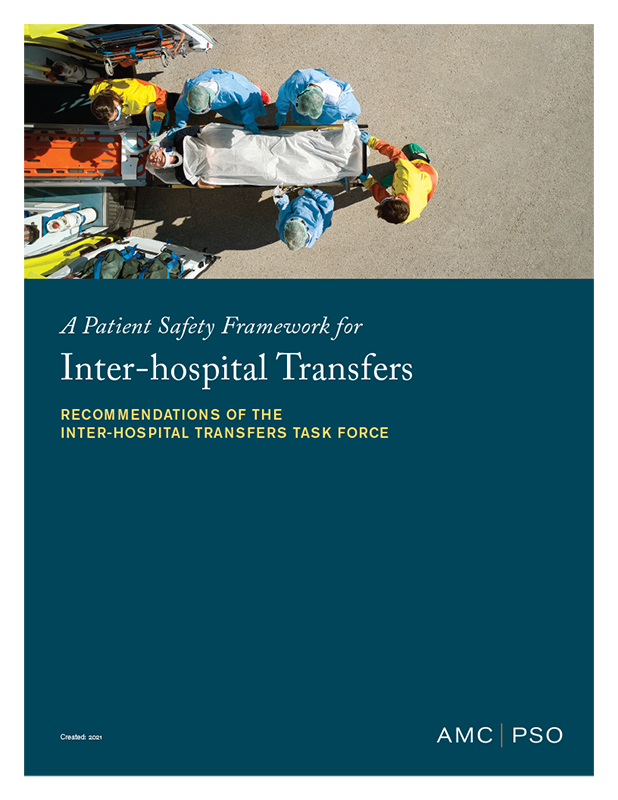Guideline
Patient Safety Framework for Inter-hospital Transfers


Recommendations of the Inter-hospital Transfer Task Force
Hospital network consolidation and health system expansion have increased significantly in the United States, and with these changes there is an expected increase in the number of inter-hospital transfers (IHT). Inter-hospital transfers provide benefits to patients who require a higher level of care, specialized diagnostic testing, or procedures unavailable at a community hospital, but IHTs also may introduce potential risks. Until recently, little attention has been given to these patient safety issues.
The Academic Medical Center Patient Safety Organization (AMC PSO) identified a need to address the challenges associated with these changes in health care delivery and formed the Inter-hospital Transfer Task Force. Instructive information was gathered from a review of the current literature, scientific evidence, guidance documents, and opinion statements from relevant sources. The Task Force included subject matter experts, comprising PSO members, with interest and experience in IHTs. There were hospitalists, nursing staff, critical care and EMS transport, and patient safety leaders.
The Task Force built a set of consensus-based and literature-supported recommendations that identified potential patient safety risks associated with inter-hospital transfers, and recommended risk mitigation strategies to address them. The guidelines reflect the aim, mission, and consensus opinion of the Task Force and offers guidance for clinicians to provide the safest possible care to patients during the transfer process.
Statement
The recommendations for Patient Safety Guidance for Inter-hospital Transfers were developed under the auspices of the Academic Medical Center Patient Safety Organization (AMC PSO) Inter-hospital Transfer Task Force. These consensus recommendations are for informational purposes only and should not be construed or relied upon as a standard of care. The AMC PSO recommends institutions review these guidelines and accept, modify, or consider alternatives based on their own institutional resources and patient populations. Institutions should review and modify these recommendations as the field continues to evolve.
More AMC PSO Content
Patient Safety Guidance for Pathology Specimens


Patient Safety Guidance for Perioperative Fire Safety

Interventional Radiology Guidelines


